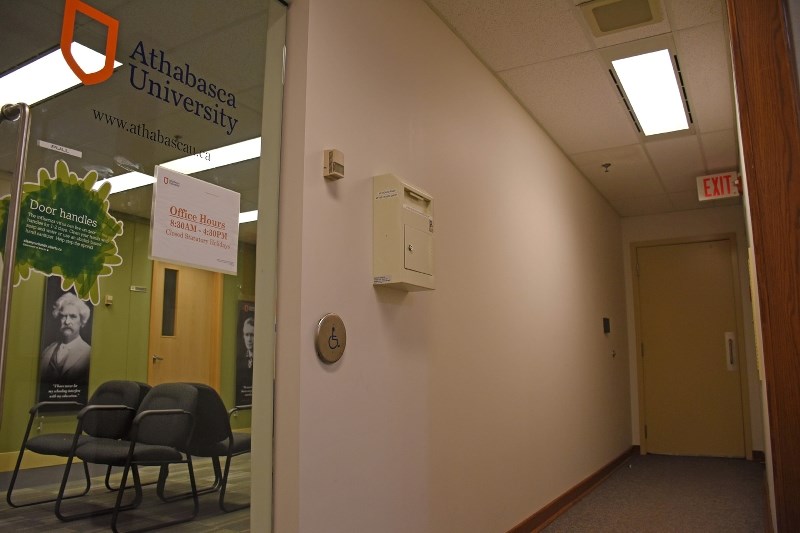The Athabasca University board of governors passed the 2016/17 budget with a projected $3.3 million deficit, if the provincial government does not cover the shortfall.
The budget will require written approval from Advanced Education Minister Marlin Schmidt, which will be presented to him on Aug. 2.
At a July 28 board meeting in Edmonton, the amended budget was presented to the room of 18 following an initial meeting with the university’s Finances and Property Council on July 25.
University interim president Peter MacKinnon called it a deficit budget and said that although the institution has an accumulated operating surplus of about $8.6 million due to cost-saving measures taken by the university, it was in fact heading towards a deficit.
“That surplus is more than offset by our liability on the pension side – the UAPP pension liability – and so, in fact, according to the auditor general and by our own reckoning, we have a deficit at Athabasca University,” MacKinnon said at the meeting.
The budget states that pension plan liability will cost $19 million, in addition to the $10.5 million accumulated operating deficit.
This budget comes on the heels of a decision by Minister Schmidt to halt the proposed budget in March, which included talk of layoffs, and put forward a new budget.
“It’s fair to say, too, that we have received signals along the way indicating to us that we should be very careful with respect to a number of matters, with respect to the possibility of layoffs,” MacKinnon said.
Runway shortens
Several board members expressed their dismay with the budget, but said they would vote in favour of it passing.
Michael Mauws was the only board member to vote against the budget, noting that if the provincial government did provide $3.3 million, it would save the $8.6 million operating surplus – “the runway” – for only a short while longer.
“For the last 18 months, we’ve been burning up the runway, and the runway is getting shorter and shorter,” he said. “We’re passing a deficit budget that doesn’t move us ahead.”
He said this budget was the same as the 2015/16 budget, with a few changed assumptions, even though the university’s financial situation has been dire for some time, both before and during MacKinnon’s presidency.
“Despite your formidable talents, you have not been able to solve our problems,” he said to MacKinnon.
MacKinnon responded that he brought forward the Presidential Taskforce on Sustainability report last June, which outlined some of the issues plaguing the university and proposed four options to stave off insolvency and bring sustainability to the institution.
“It was a necessary precursor to sustainability,” he said, later adding that this budget is a “short-term exigency budget.”
The budget
Estelle Lo, vice president of finance and administration, said the university would run an increasing deficit over the next three years, and if things run “business as usual,” it would reach insolvency in October 2017. The deficit would be $3.3 million in 2016/17, growing to $6.8 million the following year, and finally $9.1 million in 2018/19.
“This three-year budget plan is based on the premise of no layoffs,” she said. “No layoffs in the Town of Athabasca, no layoffs in the two offices in Edmonton, and no layoffs in Calgary.”
To balance this budget, she said the university would need to take out $3.3 million from the $8.6 million surplus, but that the deficit would not encroach on student fees or endowment funds. At least $4 million from the capital budget would be invested in capital IT projects.
Rocky Brown, director of financial services, said that although revenues have increased 50 per cent over the last 10 years, expenses rose 63 per cent in that same time frame.
Salaries continue to be the largest expense, with nearly $3 million going towards merits and costs of living allowances for union and faculty association employees. The provincial government has frozen these for excluded employees, like non-union employees, over the next two years.



